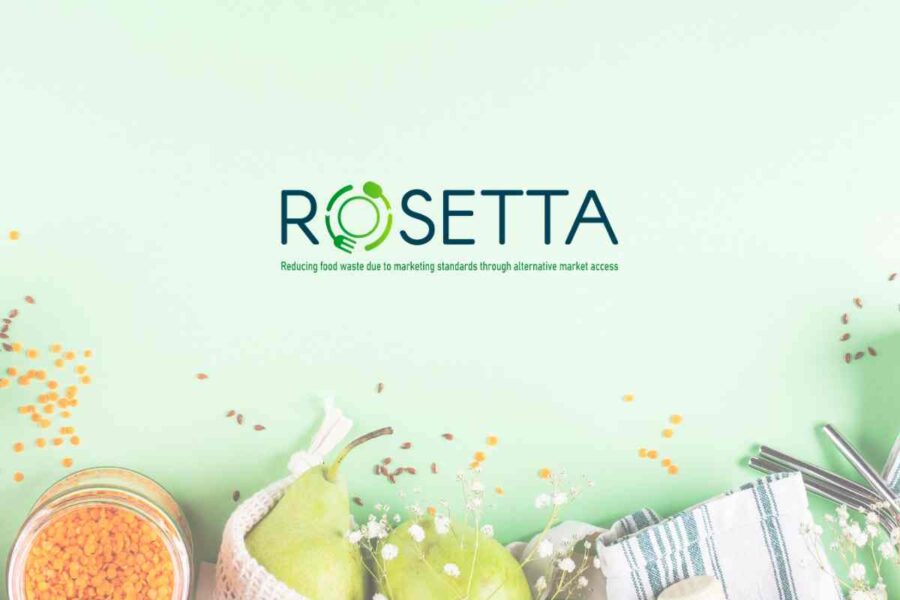Report on the Lafayette Household Hazardous Waste Collection Initiative
The Lafayette Consolidated Government (LCG) Environmental Quality Division has scheduled a Household Hazardous Waste Day to advance its commitment to environmental stewardship and the United Nations Sustainable Development Goals (SDGs). This initiative provides a critical service for the safe and responsible disposal of hazardous materials, directly contributing to a safer, healthier, and more sustainable community.
Alignment with Sustainable Development Goals (SDGs)
The event is a practical implementation of several key SDGs, aimed at creating sustainable urban environments and promoting responsible consumption patterns.
SDG 11: Sustainable Cities and Communities & SDG 12: Responsible Consumption and Production
This initiative directly supports Target 11.6, which aims to reduce the adverse per capita environmental impact of cities by improving municipal waste management. By providing a designated collection point for hazardous materials, the program also promotes Target 12.4, achieving the environmentally sound management of chemicals and all wastes, and Target 12.5, which seeks to substantially reduce waste generation.
SDG 3: Good Health and Well-being & SDG 6: Clean Water and Sanitation
Proper disposal of hazardous waste is essential for protecting public health. The event mitigates risks associated with land, air, and water contamination, safeguarding community well-being (SDG 3) and protecting local water sources from chemical pollution (SDG 6).
SDG 14: Life Below Water & SDG 15: Life on Land
By preventing hazardous chemicals from entering landfills and waterways, the program helps protect aquatic and terrestrial ecosystems from pollution, contributing to the conservation of life below water (SDG 14) and life on land (SDG 15).
Event Details and Logistics
Date, Time, and Location
- Date: Saturday, November 22, 2025
- Time: 8:00 a.m. – 12:00 p.m.
- Location: Cajun Field, 2351 W. Congress Street
- Access: Entry is restricted to the West Congress Street entrance.
Eligibility
Participation is open exclusively to residents of the City of Lafayette and the unincorporated areas of Lafayette Parish.
Guidelines for Waste Disposal
Accepted Materials
The following categories of household hazardous waste will be accepted for responsible disposal:
-
Chemicals
- Alkaline Batteries
- Chemical Cleaners
- Fluorescent Tubes
- Gasoline
- Herbicides
- Mercury Thermometers
- Paint & Paint Products
- Paint Thinner & Stripper
- Pesticides
- Photographic Chemicals
- Pool Chemicals
- Stains
- Turpentine
-
Electronics (E-Waste)
- Computer Hardware & Accessories
- Laptops & Processors
- Networking Equipment & Circuit Boards
- LCD Monitors (only)
- Printers & Fax Machines
- Security Systems
- Gaming Consoles
- Cell Phones & Bag Phones
- Telephones, Cables, Telephone Systems
- Computer Cables & Uninterruptible Power Supplies (UPS)
- Cable Boxes
-
Glass
- Thoroughly rinsed food and beverage containers (e.g., beer bottles, wine bottles, jars).
Prohibited Materials
The following items will not be accepted at this event:
- Appliances
- Furniture
- Televisions
- CRT monitors
- Office copiers
- Compact fluorescent bulbs (CFLs)
- Toner/ink cartridges
- MP3/DVD players
- Digital cameras
- Stereo equipment and speakers
- Automotive/rechargeable batteries
- Motor oil and antifreeze
- Compressed gas cylinders
- Medical waste and medicines
- Explosives and ammunition
Additional Information
For a comprehensive list of prohibited materials and information on alternative disposal locations, residents are directed to consult the official LCG website at lafayettela.gov/hhwd. Further inquiries can be made to the Environmental Quality Division at (337) 291-5637.
Analysis of Sustainable Development Goals in the Article
1. Which SDGs are addressed or connected to the issues highlighted in the article?
-
SDG 3: Good Health and Well-being
- The article directly connects improper waste disposal to public health risks, stating it “poses a threat to human health” and “endangers the safety of sanitation workers.” The event aims to mitigate these health hazards.
-
SDG 6: Clean Water and Sanitation
- The article highlights that improper disposal of hazardous waste “contaminates land, air, and water.” The collection event is a direct measure to prevent water contamination from harmful chemicals like paint, pesticides, and gasoline.
-
SDG 11: Sustainable Cities and Communities
- The “Household Hazardous Waste Day” is a municipal initiative organized by the Lafayette Consolidated Government for its residents. This represents a city-level effort to manage waste effectively and reduce the adverse environmental impact of urban areas.
-
SDG 12: Responsible Consumption and Production
- The core purpose of the event is the “environmentally sound management of chemicals and all wastes,” which is a central theme of SDG 12. It encourages residents to dispose of hazardous products responsibly, addressing the end-of-life stage of consumer goods.
2. What specific targets under those SDGs can be identified based on the article’s content?
-
Target 3.9: Substantially reduce the number of deaths and illnesses from hazardous chemicals and air, water and soil pollution and contamination.
- The event directly supports this target by providing a safe disposal method for hazardous chemicals (paint, pesticides, cleaners) that would otherwise contaminate the environment and pose health risks to the community and sanitation workers.
-
Target 6.3: Improve water quality by reducing pollution, eliminating dumping and minimizing release of hazardous chemicals and materials.
- By collecting items like gasoline, paint thinner, and pool chemicals, the program actively prevents these substances from being dumped into drains or landfills where they could leach into and contaminate water sources.
-
Target 11.6: Reduce the adverse per capita environmental impact of cities, including by paying special attention to air quality and municipal and other waste management.
- This event is a clear example of a city implementing a specialized waste management program to handle materials that cannot be placed in regular curbside collection, thereby reducing the city’s overall environmental footprint.
-
Target 12.4: Achieve the environmentally sound management of chemicals and all wastes throughout their life cycle… and significantly reduce their release to air, water and soil.
- The article’s entire premise is the “proper disposal of unwanted chemicals and electronics.” The detailed list of accepted items, from mercury thermometers to pesticides, demonstrates a direct effort to manage these hazardous wastes in an environmentally sound manner.
-
Target 12.5: Substantially reduce waste generation through prevention, reduction, recycling and reuse.
- The collection of electronics (laptops, cell phones) and glass (food and beverage containers) for proper disposal implies that these materials are being diverted from landfills for recycling, which is a key component of reducing waste generation.
3. Are there any indicators mentioned or implied in the article that can be used to measure progress towards the identified targets?
-
Implied Indicator: Amount and type of hazardous waste collected.
- The article provides extensive lists of “Accepted Items” under the categories of Chemicals, Electronics, and Glass. The total volume or weight of these specific materials collected during the event can serve as a direct indicator of the amount of hazardous waste diverted from improper disposal channels. This relates to official indicator 12.4.2 (Hazardous waste generated per capita and proportion of hazardous waste treated).
-
Implied Indicator: Amount of material recycled.
- The specific inclusion of “Thoroughly rinsed food and beverage containers” and various electronics implies a recycling pathway. The quantity of glass and e-waste collected can be measured to track progress towards recycling goals, aligning with the concept of indicator 12.5.1 (National recycling rate, tons of material recycled) on a local level.
-
Implied Indicator: Proportion of municipal waste managed in a controlled facility.
- The event itself acts as a controlled facility for a specific stream of municipal waste (household hazardous waste). The amount of waste processed through this event, relative to the city’s total waste generation, could be used as a metric. This reflects the principle of indicator 11.6.1 (Proportion of municipal solid waste collected and managed in controlled facilities).
4. Table of SDGs, Targets, and Indicators
| SDGs | Targets | Indicators (Implied from Article) |
|---|---|---|
| SDG 3: Good Health and Well-being | 3.9: Reduce illnesses from hazardous chemicals and pollution. | Volume of hazardous chemicals (pesticides, paint, etc.) collected, preventing human exposure. |
| SDG 6: Clean Water and Sanitation | 6.3: Improve water quality by reducing pollution and dumping of hazardous materials. | Amount of water-contaminating chemicals (gasoline, pool chemicals) diverted from landfills and waterways. |
| SDG 11: Sustainable Cities and Communities | 11.6: Reduce the adverse per capita environmental impact of cities, particularly in waste management. | Total quantity of household hazardous waste managed through this specialized municipal program. |
| SDG 12: Responsible Consumption and Production | 12.4: Achieve environmentally sound management of chemicals and all wastes. | The specific types and quantities of chemicals and electronics collected for proper disposal. |
| 12.5: Substantially reduce waste generation through recycling. | The amount of glass and electronic waste collected, implying diversion to recycling streams. |
Source: katc.com







